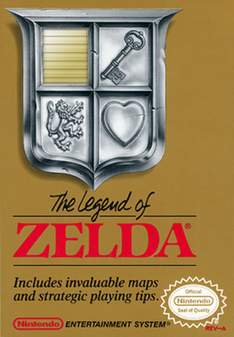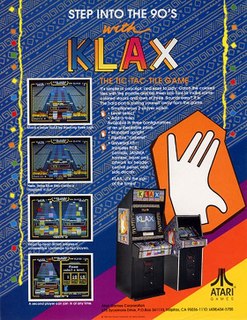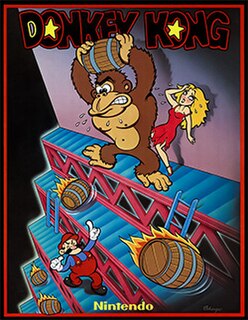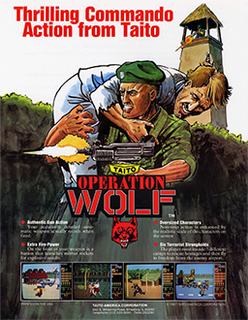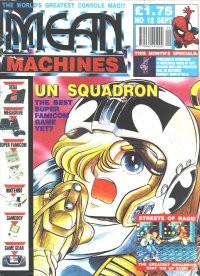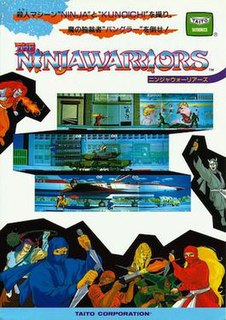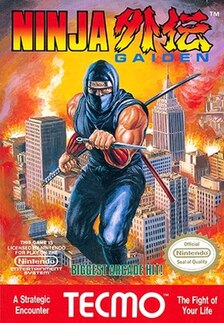History

1980: Game & Watch
Nintendo's Game & Watch handheld electronic games were imported and sold in the UK by Computer Games Limited (CGL), a trading name of UK electronics company Betacom. [10]
Game & Watch Ball, Vermin and Fire were the first Game & Watch games released by CGL in 1980 and were priced at about £20 each. [11]
CGL continued to release Game & Watch games in the UK throughout the 1980s, all branded with the CGL logo but otherwise unchanged with the exception of Helmet, which was renamed to Headache. [12]
| Title | Series | Model | Release Date (Global) | Release Date (UK) |
|---|---|---|---|---|
| Ball | Silver | AC-01 | 1980-04-28 | 1980 [11] |
| Flagman | Silver | FL-02 | 1980-06-05 | Unknown |
| Vermin | Silver | MT-03 | 1980-07-10 | 1980 [11] |
| Fire | Silver | RC-04 | 1980-07-31 | 1980 [11] |
| Judge | Silver | IP-05 | 1980-10-04 | Unknown |
| Manhole | Gold | MH-06 | 1981-01-29 | 1981 [13] |
| Helmet (Headache) | Gold | CN-07 | 1981-02-21 | 1981 [13] |
| Lion | Gold | LN-08 | 1981-04-29 | 1981 [13] |
| Parachute | Wide Screen | PR-21 | 1981-06-19 | 1981 [12] |
| Octopus | Wide Screen | OC-22 | 1981-07-16 | 1981 [12] |
| Popeye | Wide Screen | PP-23 | 1981-08-05 | 1982 [14] |
| Chef | Wide Screen | FP-24 | 1981-09-08 | 1982 [14] |
| Mickey Mouse | Wide Screen | MC-25 | 1981-10-09 | 1982 [14] |
| Egg | Wide Screen | EG-26 | 1981-10-09 | Unknown |
| Fire | Wide Screen | FR-27 | 1981-12-04 | Unknown |
| Turtle Bridge | Wide Screen | TL-28 | 1982-02-01 | 1982 [15] |
| Fire Attack | Wide Screen | ID-29 | 1982-03-26 | |
| Snoopy Tennis | Wide Screen | SP-30 | 1982-04-28 |

1981: Nintendo arcade games
1981: Donkey Kong
Donkey Kong was the first of Nintendo's arcade games to gain mainstream recognition in the UK, arriving in UK arcades in late 1981. [16]
Owing to its popularity, many official and unofficial versions of the game were released. In 1982, Nintendo's own Donkey Kong Game & Watch game was released by CGL in the UK. [17] [18] Coleco's official licensed Atari 2600 version of Donkey Kong [19] was also released in the UK in 1982, with Computer & Video Games magazine reporting that "...shops who managed to get hold of advance copies of the game before Christmas sold out in a matter of days". [20] In 1986 official licensed ports of Donkey Kong were released by UK-based software development company Ocean Software for the ZX Spectrum [21] (£7.95), [22] MSX, [23] Commodore 64 [24] (£8.95) [22] & Amstrad CPC. [25]
| Title | Developer | Platform | Release Date (UK) |
|---|---|---|---|
| Crazy Kong | Grandstand | Grandstand | 1982 [26] |
| Crazy Kong 64 | Interceptor Micros | Commodore 64 | 1983 [27] |
| Killer Gorilla | Micro Power | BBC Mirco | 1983 |
| Killer Kong | Mark Phillips | Commodore VIC-20 | 1984 [28] |
1982: Donkey Kong Jr. [29]
1983: Popeye [30]
1984: Donkey Kong 3 [31]
1984: Punch-Out!! [32] [33]
1985: VS. Golf [33]
1985: VS. Tennis [33]
1986: VS. Super Mario Bros. [34]
1987: PlayChoice-10
Nintendo's PlayChoice-10 multi-game arcade machine was distributed in the UK by Electrocoin Automatics Limited [35] [36] [37] from 1987, to coincide with the UK release of the NES, allowing players to try the latest NES games and also to preview possible upcoming releases "for as little as ten pence". [38] The arcade machine itself cost "around £2000". [39] According to the March 1988 issue of The Games Machine it had been "proving very successful in many pub sites around London". [40]

1987: Nintendo Entertainment System
1987: Mattel
The Nintendo Entertainment System (NES) launched in the UK in May 1987, [41] [42] [43] [44] after Japan (1983), the US (1985) and Scandinavia (1986). [45]
Prior to launch, around mid-1986 it was speculated that Alan Sugar's Amstrad (which had recently bought Sinclair in April 1986) was planning to release the NES under the Sinclair name in the UK. According to Andrew Wright of Activision there were "plans to release it in the UK for around £85" [46] and according to Malcolm Miller, marketing director of Amstrad "We will reserve the Sinclair name for the entertainment area and that could include a game a games console" "but it remains to be seen how well the product will do in Europe - Europeans tend to think that the equipment has to educate as well as entertain. If we do one, though, it'll be Sinclair." [47]
Mattel had been selected to be Nintendo's UK distributor by late 1986. [48] Mattel showed the NES at the January 1987 Earl's Court annual Toy Fair, [49] [50] and Judith Hann demonstrated R.O.B. and the NES on the 17th February 1987 episode of BBC's Tomorrow's World. [51]
Mattel held a NES Game Pak Prize Draw from May 1st 1987 through April 30th 1988 for customers who purchased the NES and mailed in their warranty registration card survey to Hi-Tech Electronic Services Ltd. [41]
The NES was initially advertised in the June 1987 issue of Computer & Video Games magazine [42] at a recommended retail price (RRP) of £129.99 (compared to an initial RRP of $99.99 in the US) for the “basic set” including Super Mario Bros., and £199.99 (compared to an initial RRP of $179.99 in the US) for the “deluxe set”, which instead included the toy robot accessory “R.O.B.” (Robotic Operating Buddy) and “zapper” light gun accessory, and two games designed to showcase them, Gyromite for R.O.B. and Duck Hunt for the zapper. However, within a month the RRP was quickly reduced to £99.99 and £159.99 respectively [52] [53] [54] to compete with Sega's £99.99 [55] Master System, [56] which it remained at for the rest of 1987 and until 1990.
NES game paks retailed for around £20 to £40 [57] and were significantly more expensive than other contemporary cassette-based computer games, often available for under £10 or under £3 for budget titles for systems such as the ZX Spectrum and Commodore 64, which were already very popular in the UK at the time.
International divisions of American toy company Mattel initially handled distribution for the NES in the UK, [42] Italy, Australia and Canada on behalf of Nintendo.
U.S. Gold / CentreSoft's offshoot GO! was briefly appointed as a wholesaler for the UK by Mattel, but this initially only lasted until early 1988 and NESI's takeover of UK distribution (though NESI would reappoint CentreSoft as wholesaler again in November 1988). [58] [59]
Initial UK marketing and promotional activity focused primarily on R.O.B., [60] [42] mirroring early marketing strategies from Nintendo of America. In the US, the video game crash of 1983 left retailers apprehensive of “video games”, so in 1985 Nintendo rebranded the Japanese “Famicom” (Family Computer) video game console as the “NES” (Nintendo Entertainment System) and successfully marketed it to the US primarily as a toy experience, selling over 1 million units in 1986. [61] However, the video game crash of 1983 had a comparatively minor impact on the UK games market, as video game consoles such as the Atari 2600 were less popular, with the UK of the 1980s favouring home computers such as the ZX Spectrum and Commodore 64. This was likely a contributing factor as to why Mattel's toy-centric marketing found more difficulty capturing the interest of the UK games market.
Although the NES was advertised in the UK at launch alongside “27 game paks now available” and as available to buy from at least 23 UK retailers, [42] Mattel seemingly overpromised and underdelivered, as it launched with 17 games [41] [62] [63] and with unreliable and limited availability from UK retailers. Mattel announced and advertised UK retailers publicly before securing deals, including Woolworths, Currys, Dixons and Asda, who quickly contacted trade newspaper Computer Trade Weekly (CTW) to deny that Nintendo products had gained a listing. [58] UK retailer Argos only listed the NES once in their Autumn/Winter 1987/88 catalogue, including the more expensive deluxe set bundle but no NES game paks, [64] and it did not reappear in Argos catalogues until 1990. [65]
All games initially available were from Nintendo themselves, with no third party NES games available in the UK until 1988. [66] By the end of 1987, [62] [67] the following 27 Nintendo-developed games were released for the UK by Mattel (as originally advertised):
10-Yard Fight, Balloon Fight, Baseball, Clu Clu Land, Donkey Kong, Donkey Kong Jr., Donkey Kong III, Donkey Kong Jr. Math, Duck Hunt, Excitebike, Golf, Gumshoe, Gyromite, Hogan's Alley, Ice Climber, Kung Fu, Mach Rider, Mario Bros., Pinball, Popeye, Soccer, Stack-up, Super Mario Bros., Tennis, Urban Champion, Wild Gunman, Wrecking Crew.
For a game to be released for the NES, it would need to be approved by Nintendo, and as Nintendo controlled cartridge production, developers would be required to agree to Nintendo's terms, which were far more restrictive than developing for home computers where software development was unrestricted and actively encouraged.
Despite the relative restrictiveness of development, several UK developers did go on to create successful NES games, most notably Rare (formerly home computer developer Ultimate Play the Game), who released several games for the NES, including Slalom, R.C. Pro-Am and Battletoads.
1988: NESI
In April 1987, Ron Judy (previously vice-president of marketing at Nintendo of America, who in 1983 had set up distribution for Nintendo's arcade games in Europe) moved to Paris, France and opened a small office above the Champs-Élysées, selling Nintendo products in France and Holland (Belgium, the Netherlands, and Luxembourg) as NES International (NESI) under exclusive distributorship from Nintendo Co., Ltd. [45]
After Nintendo's obligation to Mattel ended in 1988, (and according to The Games Magazine after briefly being passed to U.S. Gold's offshoot GO!) [59] NESI took over distribution of Nintendo products in the UK with Bruce Lowry (previously Vice President of Sales at Nintendo of America and President of Sega of America) moving to live and work on Nintendo's distribution in the UK for 3 years, [68] beginning as Managing Director of NESI's UK offices in Coventry. [58] [2] [3]
The 1988 chip shortage likely complicated Nintendo's efforts to make progress in the UK. In the US, where the market for Nintendo cartridges was larger than that for all home computer software, the 1988 chip shortage caused the delay of games such as Zelda II: The Adventure of Link [69] and combined with increasing demand resulted in a shortage of stock of many popular NES games.
In the UK, Nintendo only released a handful of games in 1988. This included The Legend of Zelda, Metroid, Mike Tyson's Punch-Out!!, Pro-Wrestling and R.C. Pro-Am. [70]
Nintendo's licensing agreement restricted third parties to releasing a maximum of 5 NES games per year. [71] Although third party licenses were available for the UK from 1988, [66] third party NES games did not start to be released in the UK until around the end of 1988 or early 1989. Konami were the first third party to release games for the NES in the UK, first releasing Castlevania, The Goonies II, Gradius and Top Gun. [72]
Boots and Littlewoods signed up as UK retailers for the NES in spring 1988, and until 1990 Boots would be the only major stockist of the NES in the UK. [58] In November 1988, U.S. Gold's distribution business, CentreSoft was again reappointed as a Nintendo wholesaler for the UK by NESI, with the deal this time lasting until 1 September 1991. [58]
The NES continued to struggle in the UK games market throughout 1988. According to Mike Hayes, marketing director for Nintendo UK from 1989, “Nintendo at the time was a failing brand having been treated as a toy by Mattel and never really securing the phenomenal success that it had enjoyed in Japan and North America. Dusty boxes of the Deluxe Edition would languish on the shelves of the only major stockist - Boots”. [73] According to Luther De Gale of De Gale Marketing, [74] at the time a Nintendo salesman and previously of Konami UK, [75] "Although the Nintendo is alive and well, and living in the homes of 12 million Japanese and five million American families, I've only just seen one in my local computer store - and I supplied it to them!" and "Although Nintendo have failed to produce results in Britain, the interest is still so strong that arcade companies like Electrocoin are starting to push from behind.". [76]
1989: Serif
In June 1989 [58] UK distribution of Nintendo products was taken over by San Serif Print Promotions Limited (abbreviated to Serif or San Serif), who held the rights to Trivial Pursuit and Pictionary in Europe. [77]
UK retailer Dixons began a 75 store trial with the NES in May 1989, but this lasted just five months and was cleared out in October 1989. [58]
1990: Bandai
By 1990 Bandai were successfully distributing the NES in France and Holland under European Bandai President, Bernard Prat. [58] In August 1990 [58] UK distribution of Nintendo products was taken over by Bandai [58] in anticipation of the launch of the Game Boy and Teenage Mutant Hero Turtles NES bundle, and handled from their UK offices in Fareham, Hampshire. [78] Some of the key staff from Serif switched to Bandai to continue to work on Nintendo's UK distribution, such as marketing director Mike Hayes and sales manager Rob Cooper. [58]
For Christmas 1990, the NES was bundled with Teenage Mutant Hero Turtles (the word Ninja was considered controversial in the UK at the time) and sold at a reduced price of £79.99 (previously £99.99). [79] [80] According to Mike Hayes, this was much against the wishes of Nintendo of America, but increased sales by 2000% and helped to re-establish Nintendo in the UK market, overtaking sales of Sega's Master System at the time. [81] [82]
| Title | UK Release Date | UK Licensee | UK Distributor | References |
|---|---|---|---|---|
| 10-Yard Fight | June 1987 | Nintendo | Mattel | [42] [43] [83] |
| Balloon Fight | 1987 | Nintendo | Mattel | [62] [67] [83] |
| Baseball | June 1987 | Nintendo | Mattel | [42] [43] [83] |
| Clu Clu Land | June 1987 | Nintendo | Mattel | [42] [43] [83] |
| Donkey Kong | June 1987 | Nintendo | Mattel | [42] [43] [83] |
| Donkey Kong III | 1987 | Nintendo | Mattel | [62] [67] [83] |
| Donkey Kong Jr. | 1987 | Nintendo | Mattel | [62] [67] [83] |
| Donkey Kong Jr. Math | 1987 | Nintendo | Mattel | [62] [67] [83] |
| Duck Hunt | June 1987 | Nintendo | Mattel | [42] [43] [83] |
| Excitebike | June 1987 | Nintendo | Mattel | [42] [43] [83] |
| Golf | June 1987 | Nintendo | Mattel | [42] [43] [83] |
| Gumshoe | 1987 | Nintendo | Mattel | [62] [67] [83] |
| Gyromite | June 1987 | Nintendo | Mattel | [42] [43] [83] |
| Hogan's Alley | June 1987 | Nintendo | Mattel | [42] [43] [83] |
| Ice Climber | 1987 | Nintendo | Mattel | [62] [67] [83] |
| Kung Fu | 1987 | Nintendo | Mattel | [62] [67] [83] |
| Mach Rider | 1987 | Nintendo | Mattel | [62] [67] [83] |
| Mario Bros. | 1987 | Nintendo | Mattel | [62] [67] [83] |
| Pinball | 1987 | Nintendo | Mattel | [62] [67] [83] |
| Popeye | June 1987 | Nintendo | Mattel | [42] [43] [83] |
| Soccer | 1987 | Nintendo | Mattel | [62] [67] [83] |
| Stack-up | 1987 | Nintendo | Mattel | [62] [67] [83] |
| Super Mario Bros. | June 1987 | Nintendo | Mattel | [42] [43] [83] |
| Tennis | 1987 | Nintendo | Mattel | [62] [67] [83] |
| Urban Champion | 1987 | Nintendo | Mattel | [62] [67] [83] |
| Wild Gunman | 1987 | Nintendo | Mattel | [62] [67] [83] |
| Wrecking Crew | 1987 | Nintendo | Mattel | [62] [67] [83] |
| Kid Icarus | 1988 | Nintendo | [83] | |
| Metroid | 1988 | Nintendo | NESI | [83] |
| Mike Tyson's Punch-Out!! | 1988 | Nintendo | NESI | [83] |
| Pro Wrestling | 1988 | Nintendo | NESI | [83] |
| R.C. Pro-Am | 1988 | Nintendo | NESI | [83] |
| The Legend of Zelda | 1988 | Nintendo | NESI | [83] |
| Castlevania | 1988 | Konami | NESI | [83] [84] [85] [72] |
| Gradius | 1988 | Konami | NESI | [83] [85] [86] [87] [72] |
| The Goonies II | 1988 | Konami | NESI | [83] [85] [72] |
| Top Gun | 1988 | Konami | NESI | [83] [72] |
| Super Mario Bros. 2 | June 1989 | Nintendo | [83] [88] | |
| Rush'n Attack | July 1989 | Konami | [88] [89] | |
| Ghost 'N Goblins | August 1989 | Capcom | [88] [89] | |
| Gun.Smoke | August 1989 | Capcom | [88] [89] | |
| Ikari Warriors | September 1989 | SNK | [89] [90] | |
| Trojan | September 1989 | Capcom | [89] [90] | |
| Section Z | October 1989 | Capcom | [90] [91] | |
| Xevious | October 1989 | Bandai | [90] [91] | |
| Mega Man | November 1989 | Capcom | [90] [91] | |
| RoboWarrior | November 1989 | Jaleco | [90] [91] | |
| Tiger-Heli | December 1989 | Acclaim | [91] [92] | |
| Wizards & Warriors | December 1989 | Acclaim | [91] [92] | |
| Cobra Triangle | January 1990 | Nintendo | Serif | [91] [92] |
| Life Force: Salamander | January 1990 | Konami | [91] [92] | |
| Track & Field II | January 1990 | Konami | [91] [92] | |
| Double Dribble | February 1990 | Konami | [91] [92] | |
| Metal Gear | February 1990 | Konami | [91] [92] | |
| To the Earth | February 1990 | Nintendo | Serif | [91] [92] |
| Zelda II: The Adventure of Link | March 1990 | Nintendo | Serif | [93] [94] |
| Castlevania II: Simon's Quest | April 1990 | Konami | [93] [94] | |
| Rygar | April 1990 | Tecmo | [93] [94] | |
| Solomon’s Key | April 1990 | Tecmo | [93] [94] | |
| Airwolf | May 1990 | Acclaim | [93] [94] | |
| Batman | August 1990 | Sunsoft | [94] [95] | |
| Fester's Quest | August 1990 | Sunsoft | [94] [95] | |
| Skate or Die | August 1990 | Palcom | [94] [95] | |
| Teenage Mutant Hero Turtles | August 1990 | Palcom | [94] [95] | |
| Tetris | August 1990 | Nintendo | Bandai | [94] [95] |
| Bionic Commando | October 1990 | Capcom | [95] [96] | |
| Blades of Steel | October 1990 | Konami | [95] [96] | |
| Bubble Bobble | October 1990 | Taito | [95] [96] | |
| Double Dragon II | October 1990 | Acclaim | [95] [96] | |
| Spy vs. Spy | October 1990 | Kemco | [95] [96] | |
| Silent Service | November 1990 | Konami | [96] [97] [98] | |
| Donkey Kong Classics | December 1990 | Nintendo | [97] | |
| Faxanadu | December 1990 | Nintendo | Bandai | [96] [97] |
| Mega Man 2 | December 1990 | Capcom | [97] [99] | |
| Paperboy | December 1990 | Mindscape | [96] [97] | |
| Robocop | December 1990 | Ocean | [96] [97] [100] | |
| World Wrestling | December 1990 | Tecmo | [96] [97] [101] | |
| Wrath of the Black Manta | December 1990 | Taito | [96] [97] | |
| Double Dragon | January 1991 | Nintendo | Bandai | [97] [99] |
| Pinbot | January 1991 | Nintendo | Bandai | [97] [99] [102] |
| Solar Jetman | January 1991 | Nintendo | Bandai | [97] [99] [103] |
| Ghostbusters II | February 1991 | Activision | [99] | |
| Probotector | February 1991 | Konami | [99] [104] | |
| Rescue: The Embassy Mission | February 1991 | Kemco | [99] [104] | |
| Snake Rattle 'N Roll | February 1991 | Nintendo | Bandai | [97] [99] |
| Stealth ATF | February 1991 | Nintendo | Bandai | [97] [99] |
| Super Off Road | February 1991 | Nintendo | Bandai | [97] [99] |
| The Adventures of Bayou Billy | February 1991 | Konami | [99] [104] | |
| DuckTales | March 1991 | Capcom | [99] [104] | |
| Nintendo World Cup | March 1991 | Nintendo | Bandai | [99] [104] |
| Bad Dudes Vs. DragonNinja | April 1991 | Ocean | [99] [104] | |
| Gauntlet II | April 1991 | Mindscape | [104] [105] | |
| Gremlins 2 | April 1991 | Sunsoft | [99] [104] | |
| IronSword: Wizards & Warriors II | April 1991 | Acclaim | [104] [105] | |
| Burai Fighter | May 1991 | Nintendo | [104] [105] | |
| Dr. Mario | May 1991 | Nintendo | [104] [105] | |
| Rad Gravity | May 1991 | Activision | [104] [105] | |
| Days of Thunder | June 1991 | Mindscape | [106] | |
| Jack Nicklaus Championship Golf | June 1991 | Konami | [105] [107] | |
| Turbo Racing | August 1991 | Data East | [105] [107] | |
| Captain Skyhawk | August 1991 | Nintendo | [105] [107] | |
| Solstice | August 1991 | Nintendo | [105] [107] | |
| Super Spike V'ball | August 1991 | Nintendo | [105] [107] | |
| Battle of Olympus | October 1991 | Nintendo | [107] [108] | |
| Boulder Dash | October 1991 | Nintendo | [107] [108] | |
| Goal | October 1991 | Jaleco | [107] [108] | |
| Isolated Warrior | October 1991 | Nintendo | [107] [108] | |
| Kabuki Quantum Fighter | October 1991 | Nintendo | [107] [108] | |
| Shadow Warriors | October 1991 | Tecmo | [107] [108] | |
| Shadowgate | October 1991 | Kemco | [107] [108] | |
| Defender of the Crown | December 1991 | Palcom | [108] [109] | |
| Kickle Cubicle | December 1991 | Nintendo | [108] [109] | |
| Low G Man | December 1991 | Nintendo | [108] [109] | |
| Power Blade | December 1991 | Taito | [108] [109] | |
| Rollergames | December 1991 | Konami | [108] [109] | |
| Ski or Die | December 1991 | Palcom | [108] [109] | |
| Super Mario Bros. 3 | December 1991 | Nintendo | [108] [109] | |
| The Simpsons: Bart vs. the Space Mutants | December 1991 | Acclaim | [108] [109] | |
| Top Gun: The Second Mission | December 1991 | Konami | [108] [109] | |
| WWF WrestleMania | December 1991 | Acclaim | [108] [109] | |
| Smash TV | January 1992 | Acclaim | [110] | |
| Blue Shadow | February 1992 | Taito | [109] [111] | |
| Chip 'n Dale Rescue Rangers | February 1992 | Capcom | [109] [111] | |
| Dragon's Lair | February 1992 | Elite | [109] [111] | |
| Maniac Mansion | February 1992 | Jaleco | [109] [111] | |
| Mission Impossible | February 1992 | Palcom | [109] [111] | |
| North & South | February 1992 | Infogrames | [109] [111] | |
| Star Wars | February 1992 | JVC / Lucasfilm Games | [109] [111] | |
| Swords & Serpents | February 1992 | Acclaim | [109] [111] | |
| Blaster Master | April 1992 | Sunsoft | [111] [112] | |
| Bugs Bunny Birthday Blow Out | April 1992 | Kemco | [111] [112] | |
| Captain Planet | April 1992 | Mindscape | [111] [112] | |
| Hunt For Red October | April 1992 | Hi Tech Expressions | [111] [112] | |
| Jackie Chan's Action Kung Fu | April 1992 | Hudson Soft | [111] [112] | |
| New Ghostbusters II | April 1992 | HAL Laboratory | [111] [112] | |
| New Zealand Story | April 1992 | Ocean | [111] [112] | |
| Rainbow Islands: Bubble Bobble 2 | April 1992 | Ocean | Bandai | [111] [112] |
| Snake's Revenge | April 1992 | Konami | [111] [112] | |
| Teenage Mutant Hero Turtles II: The Arcade Game | April 1992 | Konami | [111] [112] | |
| Totally Rad | April 1992 | Jaleco | [111] [112] | |
| Battletoads | May 1992 | Tradewest | Bandai | [113] |
| Adventures of Lolo 2 | June 1992 | HAL Laboratory | [112] [114] | |
| CrackOut | June 1992 | Palcom | [112] [114] | |
| Double Dragon III | June 1992 | Acclaim | [112] [114] | |
| Godzilla | June 1992 | Toho | [112] [114] | |
| Hyper Soccer | June 1992 | Konami | [112] [114] | |
| Little Nemo The Dream Master | June 1992 | Nintendo | [112] [114] | |
| Lunar Pool | June 1992 | FCI | [112] [114] | |
| Road Fighter | June 1992 | Palcom | [112] [114] | |
| Operation Wolf | August 1992 | Taito | Bandai | [115] |
| The Flintstones: The Rescue of Dino & Hoppy | August 1992 | Taito | Bandai | [115] |
| Adventure Island II | August 1992 | Hudson Soft | [114] [115] | |
| Four Player Tennis | August 1992 | Nintendo | [114] [115] | |
| High Speed | August 1992 | Tradewest | [114] [115] | |
| Hook | August 1992 | Ocean | [114] [115] | |
| Mega Man 3 | August 1992 | Nintendo | [114] [115] | |
| NES Open Golf Tournament | August 1992 | Nintendo | [114] [115] | |
| Addams Family | October 1992 | Ocean | [115] [116] | |
| Adventure in the Magic Kingdom | October 1992 | Capcom | [115] [116] | |
| Robocop 2 | October 1992 | Ocean | [115] [116] | |
| Batman Return of the Joker | December 1992 | Sunsoft | [116] [117] | |
| Mario & Yoshi | December 1992 | Nintendo | Bandai | [116] [117] |
| Paperboy 2 | December 1992 | Mindscape | [116] [117] | |
| TaleSpin | December 1992 | Capcom | [116] [117] | |
| Tiny Toon Adventures | December 1992 | Konami | [116] [117] | |
| Tom & Jerry | December 1992 | Hi Tech Expressions | Bandai | [116] [117] |
| Probotector II: Return of the Evil Forces | February 1993 | Konami | Bandai | [118] |
| Castlevania III: Dracula's Curse | March 1993 | Palcom | [118] | |
| Galaxy 5000 | TBC | Activision | ||
| Marble Madness | TBC | Milton Bradley | ||
| Lemmings | TBC | Ocean | [117] | |
| T2: Terminator 2: Judgment Day | TBC | LJN | [114] | |
| WWF WrestleMania Challenge | TBC | LJN | ||
| The Simpsons Bart Vs. The World | TBC | Acclaim | [117] | |
| Digger T. Rock: Legend of the Lost City | TBC | Milton Bradley | ||
| California Games | TBC | Milton Bradley | ||
| Trog | TBC | Acclaim | ||
| A Boy and His Blob: Trouble on Blobolonia | TBC | Nintendo | ||
| Action in New York | TBC | Infogrames | ||
| Adventure Island Classic | TBC | Hudson Soft | ||
| Alien 3 | TBC | LJN | ||
| Alfred Chicken | TBC | Mindscape | ||
| Asterix | TBC | Infogrames | ||
| Barbie | TBC | Hi Tech Expressions | ||
| Battleship | TBC | Mindscape | ||
| Battletoads / Double Dragon | TBC | Nintendo | ||
| Bucky O'Hare | TBC | Palcom | ||
| Castelian | TBC | Storm Sales Curve | ||
| Darkwing Duck | TBC | Capcom | ||
| Bram Stoker's Dracula | TBC | Sony Imagesoft | ||
| DuckTales 2 | TBC | Capcom | ||
| Dropzone | TBC | Mindscape | ||
| Elite | TBC | Imagineer | ||
| Eliminator Boat Duel | TBC | Storm Sales Curve | ||
| F-15 Strike Eagle | TBC | MicroProse | ||
| Ferrari Grand Prix Challenge | TBC | Acclaim | ||
| Gargoyle's Quest II | TBC | Capcom | ||
| George Foreman’s KO Boxing | TBC | Acclaim | ||
| Home Alone 2: Lost in New York | TBC | THQ | ||
| James Bond Jr. | TBC | THQ | ||
| Jimmy Connors Tennis | TBC | Ubisoft | ||
| Joe & Mac: Caveman Ninja | TBC | Elite | ||
| Jurassic Park | TBC | Ocean | ||
| Kirby's Adventure | TBC | Nintendo | ||
| Kick Off | TBC | Imagineer | ||
| Krusty's Fun House | TBC | Acclaim | ||
| The Lion King | TBC | Virgin | ||
| Mario Is Missing! | TBC | Mindscape | ||
| McDonaldLand | TBC | Ocean | ||
| Mega Man 4 | TBC | Nintendo | ||
| The Miracle Piano Teaching System | TBC | Mindscape | ||
| Monster in My Pocket | TBC | Palcom | ||
| Noah's Ark | TBC | Konami | ||
| Pac-Man | TBC | Nintendo | ||
| Parodius | TBC | Palcom | ||
| Parasol Stars: Rainbow Islands II | TBC | Ocean | ||
| The Legend of Prince Valiant | TBC | Ocean | ||
| Pirates! | TBC | Palcom | ||
| Punch-Out!! | TBC | Nintendo | ||
| Rad Racer | TBC | Nintendo | ||
| Spider-Man: Return of the Sinister Six | TBC | LJN | ||
| Street Gangs | TBC | Infogrames | ||
| Super Mario Bros. / Duck Hunt | TBC | Nintendo | ||
| Super Mario Bros. / Tetris / Nintendo World Cup | TBC | Nintendo | ||
| Super Turrican | TBC | Imagineer | ||
| Sword Master | TBC | Activision | ||
| Tetris 2 | TBC | Nintendo | ||
| The Incredible Crash Dummies | TBC | LJN | ||
| The Jungle Book | TBC | Virgin | ||
| Time Lord | TBC | Milton Bradley | ||
| Ultimate Air Combat | TBC | Activision | ||
| WWF WrestleMania Steel Cage Challenge | TBC | LJN | ||
| Wizards & Warriors III | TBC | Acclaim | ||
| Yoshi's Cookie | TBC | Nintendo |
1989: Club Nintendo
Club Nintendo was the first official magazine for Nintendo in the UK and Europe, mirroring Nintendo Fun Club from the US. It was distributed by subscription and designed, translated from English into 13 or 14 different European languages and printed by Catalyst Publishing, a contract publishing house in Lemington Spa, Warwickshire. [119] Up to six issues were released per year, at a rate of one issue every two months from March/April 1989 to July/August 1993, [120] [121] when Nintendo Magazine System (first published by EMAP in October 1992) replaced it as the UK's primary official Nintendo magazine.

1989: Game Boy
1989: Imports
Although not officially released in the UK until September 1990, the Game Boy console and Game Boy games were imported and sold in the UK as early as July 1989. [122] The Game Boy launched in Japan in April 1989 and unlike the Nintendo Entertainment System before it, which used regional lockout methods such as the 10NES chip, the Game Boy accepted cartridges designed for markets of any country and any language.
1990: Bandai
The Nintendo Game Boy was officially launched by Nintendo in the UK in September 1990, [123] with the first 5,000 Game Boy consoles being sold to UK retailer Dixons by Serif and Bandai sales manager Rob Cooper. [124]
UK distribution for the Game Boy was initially handled by Bandai, who took over distribution of Nintendo products in the UK from Serif in August 1990 [58] after Serif were unable to raise the £4 million to fund inventory merchandising and marketing costs [58] to finance the bid for the UK market, reported by Computer Trade Weekly via Advanced Computer Entertainment magazine to be upwards of £20 million total. [125]
The Game Boy launched at a recommended retail price (RRP) of £69.99 (compared to a RRP of $89.99 in the US) and was sold bundled with the Tetris Game Pak and a Game Link Cable. Six other Game Boy Game Paks were available and sold separately at launch in the UK including Super Mario Land, Alleyway, Golf, Qix, Solar Striker and Tennis, all with a RRP of £19.99. [95] [126]
The Game Boy was advertised as stocked by UK retailers Currys, Debenhams, Dixons, Hamleys, Harrods, Index, Rumbelows, Toys R Us, Selfridges, Virgin and Woolworths. [127]
| Title | UK Release Date | UK Licensee | UK Distributor | References |
|---|---|---|---|---|
| Tetris | September 1990 | Nintendo | Bandai | [95] |
| Super Mario Land | September 1990 | Nintendo | Bandai | [95] |
| Alleyway | September 1990 | Nintendo | Bandai | [95] |
| Golf | September 1990 | Nintendo | Bandai | [95] |
| Qix | September 1990 | Nintendo | Bandai | [95] |
| Solar Striker | September 1990 | Nintendo | Bandai | [95] |
| Tennis | September 1990 | Nintendo | Bandai | [95] |
| Balloon Kid | February 1991 | Nintendo | Bandai | [97] |
| Pinball: Revenge of the Gator | February 1991 | [97] | ||
| Kwirk | February 1991 | [97] | ||
| Wizards & Warriors X: The Fortress of Fear | February 1991 | [97] | ||
| Double Dragon | March 1991 | [99] | ||
| Gargoyle's Quest | March 1991 | [99] | ||
| The Amazing Spider-Man | March 1991 | [99] | ||
| The Chessmaster | April 1991 | [104] | ||
| Nintendo World Cup | May 1991 | [104] | ||
| Burai Fighter Deluxe | June 1991 | [104] | ||
| Dr. Mario | June 1991 | Nintendo | [104] | |
| The Bugs Bunny Crazy Castle | August 1991 | [105] [107] | ||
| Radar Mission | August 1991 | Nintendo | [105] [107] | |
| Side Pocket | August 1991 | [105] [107] | ||
| Batman: The Video Game | October 1991 | [107] [108] | ||
| Chase H.Q. | October 1991 | [107] [108] | ||
| DuckTales | October 1991 | [107] [108] | ||
| F-1 Race | October 1991 | [107] [108] | ||
| Hyper Lode Runner | October 1991 | [107] [108] | ||
| Motocross Maniacs | October 1991 | [107] [108] | ||
| R-Type | October 1991 | [107] [108] | ||
| RoboCop | October 1991 | [107] [108] | ||
| Teenage Mutant Hero Turtles: Fall of the Foot Clan | October 1991 | [107] [108] | ||
| Boulder Dash | December 1991 | [108] [109] | ||
| Boxxle | December 1991 | [108] [109] | ||
| Castlevania: The Adventure | December 1991 | [108] [109] | ||
| Dynablaster | December 1991 | [108] [109] | ||
| Gremlins 2 | December 1991 | [108] [109] | ||
| Kung Fu Master | December 1991 | [108] [109] | ||
| Paperboy | December 1991 | [108] [109] | ||
| The Rescue of Princess Blobette | December 1991 | [108] [109] | ||
| Bubble Ghost | February 1992 | [109] [111] | ||
| Fortified Zone | February 1992 | [109] [111] | ||
| Ghostbusters II | February 1992 | [109] [111] | ||
| Mercenary Force | February 1992 | [109] [111] | ||
| Navy SEALS | February 1992 | [109] [111] | ||
| Nemesis | February 1992 | [109] [111] | ||
| Othello | February 1992 | [109] [111] | ||
| Bart Simpson's Escape from Camp Deadly | February 1992 | [109] [111] | ||
| Skate or Die: Bad 'N Rad | February 1992 | [109] [111] | ||
| Sneaky Snakes | February 1992 | [109] [111] | ||
| Super R.C. Pro-Am | February 1992 | [109] [111] | ||
| Blades of Steel | April 1992 | [111] [112] | ||
| Bubble Bobble | April 1992 | [111] [112] | ||
| Burger Time Deluxe | April 1992 | [111] [112] | ||
| Choplifter II | April 1992 | [111] [112] | ||
| Q*bert | April 1992 | [111] [112] | ||
| WWF Superstars | April 1992 | [111] [112] | ||
| Double Dragon II | June 1992 | [112] [114] | ||
| Gauntlet II | June 1992 | [111] [114] | ||
| The Hunt for Red October | June 1992 | [111] [114] | ||
| Solomon's Club | June 1992 | [111] [114] | ||
| Snoopy's Magic Show | June 1992 | [111] [114] | ||
| Marble Madness | June 1992 | [112] [114] | ||
| Pac-Man | June 1992 | [112] [114] | ||
| Football International | June 1992 | [114] | ||
| Mr. Do! | August 1992 | [112] [115] | ||
| Metroid II: Return of Samus | August 1992 | [114] [115] | ||
| Kid Icarus: Of Myths and Monsters | August 1992 | [114] [115] | ||
| Hook | August 1992 | [114] [115] | ||
| Adventure Island | August 1992 | [114] [115] | ||
| Caesars Palace | August 1992 | [114] [115] | ||
| Mega Man: Dr. Wily's Revenge | August 1992 | [114] [115] | ||
| Home Alone | October 1992 | [115] [116] | ||
| The Addams Family | October 1992 | [115] [116] | ||
| Mickey Mouse | October 1992 | [115] [116] | ||
| Shadow Warriors | October 1992 | [115] [116] | ||
| Teenage Mutant Hero Turtles II: Back From the Sewers | October 1992 | [115] [116] | ||
| Track Meet | October 1992 | [115] [116] | ||
| T2: Terminator 2: Judgment Day | [114] |
1992: Super Nintendo Entertainment System


